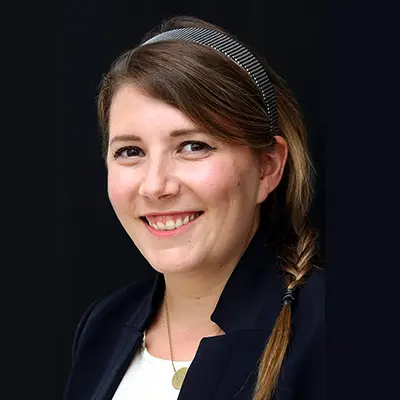For Katherine Rosenwasser, MD, chief of pediatric orthopedic trauma at NewYork-Presbyterian and Columbia, developing long-term relationships with her patients is her favorite part of her job. Dr. Rosenwasser is an expert in the operative and non-operative treatment of musculoskeletal trauma. Her subspecialty focus – and her passion – is in limb deformity and limb length discrepancies. She works with children and their families throughout their life to develop treatment plans to manage these lifelong, complex issues.
Below, Dr. Rosenwasser discusses her interest in pediatric limb deformity, the role of shared decision-making in the care for these children, and her commitment helping the next generation of physicians find the specialty that’s right for them.
Limb deformity and limb lengthening is a very niche subspecialty. How did you first become interested in it?
When I was in medical school at Columbia, I had the issue of liking everything I learned. I really liked pediatrics, I liked orthopedics, and I liked trauma. From there, I found pediatric deformity surgery, which took what I thought were the best parts of trauma surgery and applied it to the deformity space.
Limb deformity and limb length discrepancies are relatively common – approximately 1 in every 2,100 infants is born with a limb deformity, and more than 50% of people have differences in their leg lengths. Most pediatric orthopedists see some number of kids with these conditions, but there are not many who specialize in it. I knew that this was what I wanted to focus my career on, so I went on to complete a specialized fellowship in which I learned how to address angular deformities and limb length discrepancies.
How do you approach deciding between non-surgical or surgical approaches for treatment?
These decisions are typically very individualized. For example, limb length discrepancies can be managed in many different ways. Guided growth is an option for younger children with angular deformities who have ample growth remaining. Older children or the adult population may require osteotomy corrections for deformity or shortening/lengthening surgeries for limb length equality.
Additionally, as physicians we understand that the way a patient’s legs look or their height is a very personal choice, and you can never guess what each person will care about. It’s nice to be able to offer different options that can address personal needs and goals.
Guided growth sounds like it would be an invasive procedure. How does it work?
Guided growth is the gold standard across pediatric orthopedics. The vast majority of cases treated with guided growth are on the lower limb, but it can be applied to the wrist and forearm in rare cases with specific indications.
When children have open physes, we perform guided growth, a minimally invasive outpatient procedure, in which a temporary tension band plate is applied to either one or both sides of the growth plate to direct or slow down growth, depending on the pathology involved. It’s a small intervention with a fast recovery that can have powerful differences in a growing child.
Despite it being an excellent tool to use, guided growth can sometimes be hard for patients and their families to conceptualize because they are undergoing an operation but initially waking up the same as they went to sleep. So I make sure I thoroughly discuss procedure this with them, explaining how it works, it’s excellent safety profile and how powerful a tool it can be for the growing child.
What role does shared decision-making play in treatment planning for your patients?
Unlike some parts of medicine where you are iterating and homing in one specific condition and/or procedure, pediatric deformity surgery is more of a choose your own adventure which makes collaboration with the patient incredibly important. I partner with each family to create congenital life treatment plans and in some cases may work with them over the course of 15 or 20 years of their life. Because I meet kids when they’re really young and know them for a long time, we have a lot of conversations, I listen to their concerns, and work together with their families to make decisions about what will be best approach for each child’s specific situation. There’s a lot of creativity to it and a lot of longitudinal care.
You mentioned that this is a very specialized field. How are you helping educate future clinicians about pediatric deformity surgery?
I am passionate about educating students and trainees about the field so that they have all of the knowledge needed to make a decision about where they want to focus their career. I serve as the orthopedic director of medical education at Columbia’s Vagelos College of Physicians and Surgeons and do a lot of musculoskeletal education for future physicians and surgeons. I like to expose medical students to the different options, so they know that not everybody who goes into orthopedics becomes a total joint surgeon or a spine surgeon.
The biggest thing I hope that students takeaway from me is that in this field, you really feel like a physician as opposed to only a surgeon. You get to have long- and short-term relationships with patients and have a nice mix of where you’re treating in the body. I don’t think this is available in all avenues of orthopedics as readily as it is in pediatrics.




